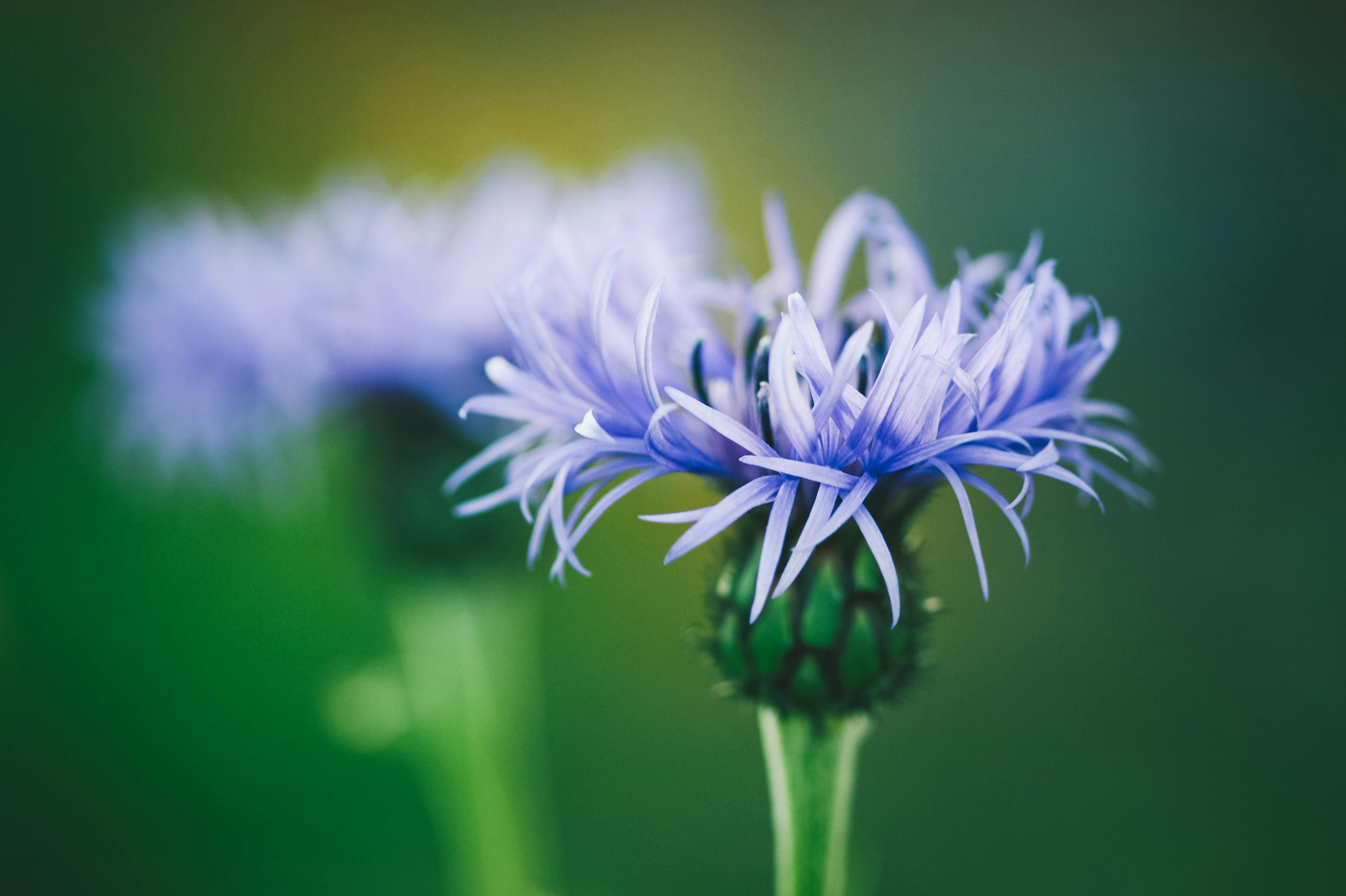Bluebonnets are the state flower of Texas and a beloved symbol of spring. Planting bluebonnets is a great way to provide winter interest in your garden and enjoy their beautiful blooms come spring. When it comes to planting bluebonnets, timing is everything. Knowing when to plant bluebonnets will help ensure you get the most out of your plants and enjoy their beauty throughout the season.The best time to plant bluebonnets is in the fall, typically between mid-September and mid-November. Planting in the fall allows the seeds to germinate and establish a strong, healthy root system before the hot summer months.
How Long Does It Take For Bluebonnets To Germinate?
Bluebonnets, the state flower of Texas, are a type of lupine that is known for its beautiful blue flowers. The seeds of the bluebonnet can be planted in the fall or spring and will take anywhere from 10-20 days to germinate. Once germinated, the plants will begin to grow and bloom in late spring and early summer.
The amount of time it takes for bluebonnet seeds to germinate depends on several factors. The temperature and amount of moisture in the soil can affect how long it takes for the seeds to sprout. Warmer temperatures tend to speed up the process while cooler temperatures can slow it down. Additionally, if there is not enough moisture in the soil, the seeds may take longer to germinate.
In order to ensure that your bluebonnets sprout as quickly as possible, it is important to provide them with proper care after planting. Make sure that you water your plants regularly and that they are getting plenty of sunlight each day. Additionally, adding a layer of mulch around your plants can help keep them warm at night and encourage faster germination times.
Once your bluebonnets have germinated, they will continue to grow throughout the summer months until they reach their peak bloom in late spring or early summer. During this time you will be rewarded with beautiful fields full of vibrant blue flowers that are sure to bring a smile to your face!
What Are The Best Soil Conditions For Planting Bluebonnets?
Bluebonnets are a beautiful and iconic flower of Texas. To ensure that these wildflowers spread and thrive, it is important to understand the best soil conditions for planting bluebonnets. The ideal soil conditions for bluebonnets include well-drained, sandy soils with a pH of 6.0 to 6.5 and a moderate amount of organic matter. It is also important to keep in mind that bluebonnets prefer full sun exposure and will not grow as well in partial shade or heavily shaded areas.
For optimal growth, bluebonnet seeds should be planted in the fall, preferably during the months of October or November. Before planting, the soil should be lightly tilled or raked to create a smooth bed for germination. Additionally, adding some compost or other organic matter can help improve the soil’s drainage and fertility. After planting, it is important to keep the soil moist but not too wet until germination occurs.
Bluebonnets typically take about two weeks to germinate and should be watered regularly during this period. Once established, bluebonnets do not require much additional water and can usually survive without supplemental watering during periods of drought or extreme heat. With proper care and attention, these wildflowers will thrive in their new home!
Should I Soak My Bluebonnet Seeds Before Planting?
Soaking bluebonnet seeds before planting is highly recommended. This helps to soften the seed coat and encourage faster and more successful germination. The process is simple; just soak the seeds in warm water for 12-24 hours prior to planting. Once the seeds have softened, they can be planted directly into the soil. This will help ensure that they fully absorb water and nutrients, and will also help speed up their germination time. Soaking also helps to remove any impurities or contaminants from the seed, ensuring that only healthy plants grow.
For best results, use a shallow pan or dish with a lid to soak your bluebonnet seeds. Fill it with lukewarm water and add the seeds, making sure they are completely submerged in water. After soaking for 12-24 hours, drain off any excess water and plant your bluebonnet seeds immediately. Since bluebonnets are known for being slow to germinate, soaking should help speed up the process significantly.
Soaking bluebonnet seeds before planting can be an important part of preparing them for growth. It helps to soften the seed coat, remove impurities, and promote faster germination rates. Following these steps will give you a head start on growing beautiful bluebonnets in your garden!
What Is The Optimal Sunlight For Planting Bluebonnets?
The optimal sunlight for planting bluebonnets is full sun, with six or more hours of direct sunlight per day. Bluebonnets are native to Texas and they require full sun in order to thrive. If you have an area that receives less than six hours of sunlight each day, you should consider planting a variety of other flowers instead of bluebonnets. Bluebonnets are able to tolerate some shade, but it is best to avoid planting them in areas where they will receive less than six hours of direct sunlight each day.
It is also important to note that bluebonnets prefer well-drained soil and good air circulation. They should not be planted in areas with standing water or overly damp soil as this can lead to root rot and other problems. If you are planting bluebonnets in an area with poor drainage, consider adding a layer of gravel or sand underneath the soil to help improve drainage.
Lastly, it is important to remember that bluebonnets need plenty of water during the first few weeks after planting in order to get established. Once established, bluebonnets are drought tolerant and do not need much supplemental watering beyond rainfall. However, during the establishment period you should water your plants regularly and make sure they get enough moisture for their roots to take hold and thrive.

Planting Bluebonnet Seeds
When planting bluebonnet seeds, it is important to plant them at the right depth. The best way to ensure that the seeds are planted properly is to sprinkle them over the soil surface and then lightly press them down into the soil. This will help to ensure that they are planted at a consistent depth. If you want to plant the seeds deeper, you can do so but it is not necessary. Planting them too deep will only increase the risk of them not germinating properly.
It is also important to note that bluebonnets need full sunlight and well-draining soil in order to thrive. If your soil retains water for too long, then it can cause the seeds to rot before they have a chance to germinate. Make sure your soil has good drainage before planting bluebonnet seeds.
In terms of how deep you should plant the bluebonnet seeds, it really depends on how much light they will receive and what type of soil you have. Generally speaking, if your soil is light and sandy, then you should only plant the seeds about a quarter of an inch deep. If your soil is heavier and clay-like, then you should plant them slightly deeper, about half an inch or so below the surface. This will help ensure that they get enough light and moisture for optimal growth.
In conclusion, when planting bluebonnet seeds it is important to make sure that they are planted at the right depth for optimal germination and growth. Depending on your soil type and how much light your plants will receive, this depth may vary from a quarter of an inch up to half an inch below the surface of the soil.
How Far Apart Should I Space Bluebonnet Seeds?
When planting bluebonnets, it is important to consider how far apart the seeds should be spaced. The general rule of thumb is to space the seeds about six inches apart, as this will give the plants the room they need to grow and reach their full potential. Bluebonnets are a type of wildflower that can reach heights of up to two feet when fully grown, so it’s important to give them the space they need so they can thrive. It’s also important to take into account that bluebonnets prefer well-drained soil and full sun, as too much water or shade can stunt their growth. When planting bluebonnet seeds, it’s best to keep them in a spot where they will receive plenty of sunlight and no standing water.
It’s also important to note that while bluebonnets may look delicate, they are actually quite hardy and can survive in most climates. They are well-suited for Texas and other states with similar climates, but can also thrive in cooler climates as long as the soil is properly prepared beforehand. Bluebonnets have a tendency to spread quickly once planted, so it’s important not to overcrowd them when planting. Spacing them out properly will ensure that each plant has enough room to grow and won’t compete with its neighbors for resources such as sunlight or water.
When planting bluebonnet seeds, patience is key as it may take several weeks before the plants start blooming. The best time to plant these wildflowers is usually in early spring or late fall when temperatures are milder and there is plenty of moisture in the soil. With proper care and attention, bluebonnets can be enjoyed for many years with beautiful blooms each season!
What Type Of Fertilizer Is Ideal For Planting Bluebonnets?
The short answer is any slow-release, balanced fertilizer with a ratio of 10-10-10. Bluebonnets are nitrogen-loving plants and will need plenty of this nutrient as they grow. A slow-release fertilizer is ideal as it provides consistent nutrition throughout the growing season without having to reapply. It’s also important to make sure that the fertilizer contains all three essential nutrients: nitrogen, phosphorus, and potassium (N-P-K ratio). A balanced ratio of 10-10-10 will give your bluebonnets the best chance for success.
It’s also important to remember that bluebonnets are native to Texas and thrive in soil that is slightly alkaline. If your soil is too acidic, you can add lime or another alkaline product to help raise the pH level. This will help your bluebonnets absorb nutrients more easily, which can have a significant impact on their growth and health.
Finally, be sure to follow all instructions on the fertilizer package when applying it to your garden beds. Too much fertilizer can burn your plants so it’s important to stick to the recommended amounts for best results. With proper fertilization, your bluebonnets should thrive and bring you years of enjoyment!

Conclusion
Bluebonnets are a beautiful flower to have in your garden. It is important to know when the best time to plant bluebonnets is so that you can enjoy their beauty for years to come. The best time to plant bluebonnets is in early fall, as soon as the temperatures start to cool off, typically in late September or early October. By planting bluebonnets during this time, you can ensure a successful growth cycle and enjoy their beauty for many years. You should also make sure that the soil has enough nutrients and water for the plants to thrive and take care of them throughout the year by providing fertilization and adequate water. With a little bit of care, you can have a beautiful bluebonnet garden that will be enjoyed by all!
Overall, planting bluebonnets at the right time is essential for successful growth. Knowing when to plant them – usually in early fall – and taking proper care of them throughout the year will ensure that your garden blooms with beauty every spring season. By following these steps, you can ensure that your bluebonnet garden flourishes with joyous blooms for many years to come.

